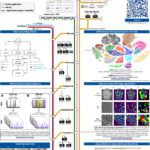
Schematics of Bioinformatics workflows across a multitude of domains.
In the rapidly evolving world of bioinformatics, researchers are constantly inundated with a plethora of tools and techniques designed to extract meaningful insights from biological data. The sheer volume of data generated from high-throughput sequencing technologies, such as RNA-seq and DNA-seq, has necessitated the development of advanced computational methods to process, analyze, and interpret this information.
RNA-seq and DNA-seq have become the gold standards for understanding gene expression and genomic variations, respectively. RNA-seq allows scientists to quantify gene expression levels and identify novel transcripts, while DNA-seq provides insights into genomic variations, such as single nucleotide polymorphisms (SNPs) and insertions/deletions. These techniques have revolutionized our understanding of the molecular underpinnings of various diseases and have paved the way for personalized medicine.
However, the biological world is not just about genes and genomes. Metagenomics delves into the collective genetic material from environmental samples, allowing us to explore the microbial communities in various ecosystems, from the human gut to the deepest oceans. This approach has provided a deeper understanding of microbial diversity, function, and their impact on global processes.
On the other hand, proteomics focuses on the large-scale study of proteins, which are the workhorses of the cell. By understanding the structure, function, and interactions of proteins, researchers can get a more comprehensive view of cellular processes and pathways.
Yet, with the explosion of data from these techniques, there’s a pressing need for robust computational workflows. Enter workflow managers like Nextflow and Snakemake. These tools have been instrumental in streamlining bioinformatics processes, ensuring reproducibility, and facilitating the scaling of analyses across large datasets and computational infrastructures.
